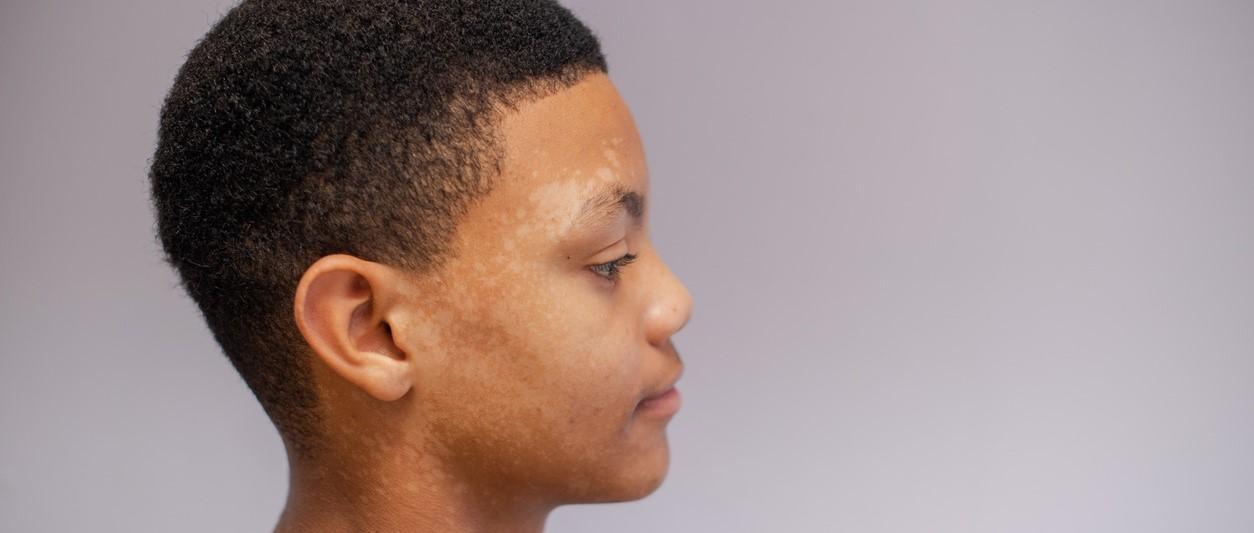
Common skin complaints: understanding tinea versicolor
Peer reviewed by Dr Krishna Vakharia, MRCGPAuthored by Amberley DavisOriginally published 11 Nov 2022
Meets Patient’s editorial guidelines
- DownloadDownload
- Share
- Language
- Discussion
If you've noticed a rash of patchy colours develop on your skin, you may have tinea versicolor - which also goes by the name pityriasis versicolor. This common skin condition can happen to anyone, no matter how healthy and fit they are, and can be managed with various treatments.
In this article:
Continue reading below
What is tinea versicolor?
Tinea versicolor, or pityriasis versicolour, is a common fungal infection in which the normal skin colour is affected, known as your skin's pigmentation.
This skin condition affects between 1% and 40% of the population, with the higher percentage of cases living in warmer and more humid climates1. Aside from being relatively common, you may have also heard of tinea versicolor through reality TV star Molly-Mae Hague, who took to social media to describe how it has affected her self-confidence.
While this skin complaint may result in stress and self-consciousness, it doesn't hurt or cause any physical damage beyond the rash.
Tinea versicolor is caused by an overgrowth of yeast - tiny harmless organisms that live on everybody's skin. Some people are more prone to the yeast on their skin multiplying - which triggers this skin disease but causes no harm to a person's health2.
How to identify tinea versicolor
The symptoms of tinea versicolor are mainly visual, although some people may experience mild itchiness. Consultant dermatologist Dr Simon Zokaie describes the signs to look out for:
"Tinea versicolor results in patches of discoloured skin that can either appear lighter (hypopigmentation) or darker (hyperpigmentation) to the rest of your skin. Usually, they develop gradually and build up to create larger patches. This condition often affects the shoulders, back, and top of the chest."
On light skin - discoloured patches are usually red, pink, or pale brown.
On dark skin - discoloured patches tend to be paler than the surrounding skin.
Continue reading below
How to treat tinea versicolor
Doctors can treat tinea versicolor with antifungal creams, tablets, and shampoos. "These treatments are usually very effective at treating the condition," says Dr Zokaie.
Your FAQs
Is tinea versicolor contagious?
Tinea versicolor is not contagious. The main risk factors are having a weakened immune system, often resulting from illness or pregnancy, and using certain medications, such as antibiotics or birth control pills.
Can tinea versicolor cause hair loss?
There is evidence that this skin condition can also cause some people to lose hair - but only directly in the areas of patchy, discoloured skin. In one study, this happened to around 60% of 39 participants3. This hair loss was most common on the forearms, stomach, neck, as well as the beard area in the men.
Can tinea versicolor go away on its own?
Tinea versicolor is much more common in hot and humid climates, which suggests that cooler weather can significantly improve the infection. However, it usually doesn't completely disappear without a course of treatment.
Can tinea versicolor be cured?
Treatment can completely clear up the rash, although it can take several months for your skin tone to return to normal. However, tinea versicolor is a long-term condition, and the problem often returns. According to the National Institute for Health and Care Excellence (NICE), it may return in up to 60% of people in the first year after treatment and up to 80% after two years4.
However, there are some useful methods to help prevent tinea versicolor from returning. One option is to continue using the specialist shampoo after your rash has cleared up - once every 2-4 weeks should be enough. Alternatively, if you find that your rash returns on a regular basis, your doctor may advise you to continue with a course of antifungal tablets.
Remember, if the appearance of tinea versicolor is getting you down, causing stress, or affecting your confidence, talking with friends and family can help.
Speaking to our loved ones can often help us to see things from a more positive perspective, as well as show us how little people notice things we may worry about.
Further reading
Patient picks for Skin rashes

Skin, nail and hair health
Common rosacea triggers and how to avoid them
One in ten people in the UK are thought to be suffering from rosacea - a condition that causes redness and flushing of the skin. Like many skin conditions, its exact cause is unknown. But the good news is that treatments are available, and people living with rosacea can take steps to minimise redness and flare-ups.
by Gillian Harvey

Skin, nail and hair health
Scarlet fever: a doctor's advice
With a surge in cases of scarlet fever, GP and mum, Dr Krishna Vakharia, our clinical director here at Patient.info, talks about what you need to know and what to do if you're worried.
by Dr Krishna Vakharia, MRCGP
Continue reading below
Article history
The information on this page is peer reviewed by qualified clinicians.
11 Nov 2022 | Originally published
Authored by:
Amberley DavisPeer reviewed by
Dr Krishna Vakharia, MRCGP

Ask, share, connect.
Browse discussions, ask questions, and share experiences across hundreds of health topics.

Feeling unwell?
Assess your symptoms online for free